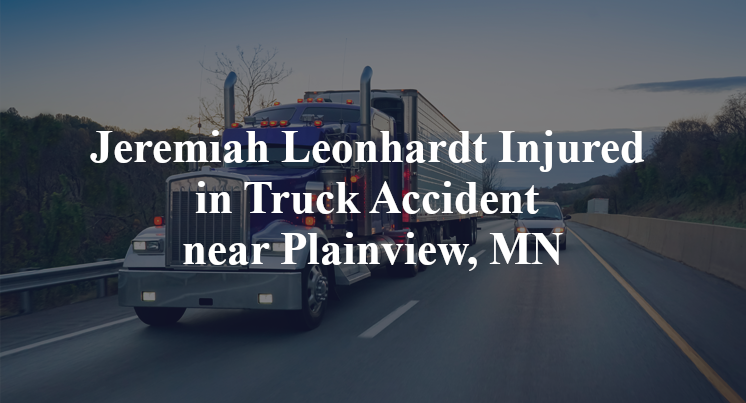Jeremiah Leonhardt Injured in Truck Accident near Plainview, MN
Wabasha County, MN — April 15, 2025, Jeremiah Leonhardt was injured in a truck accident at about 10:40 a.m. on State Highway 42.
Authorities said a 2020 Ram 1500 was headed east on County Road 14 when it collided with a 2010 Peterbilt semi-truck that was going north on State Highway 42 near Plainview.

Peterbilt driver Jeremiah Otto Leonhardt, 46, suffered non-life-threatening injuries in the crash, according to authorities. The Dodge driver was not injured.
Authorities have not released any additional information about the Wabasha County crash at this time. The accident is still under investigation.
Commentary by Attorney Michael Grossman
Crashes at rural highway intersections often come down to a familiar legal question: who had the right of way, and did the other driver fail to yield?
Rural intersections can be deceptively hazardous. They may lack traffic signals, have limited sightlines due to elevation or vegetation or simply be configured in a way that makes gauging speed and distance more difficult, especially when large commercial vehicles are involved. That’s why these roads demand heightened awareness from everyone, and an even higher standard of care from commercial drivers, who are operating vehicles that are slower to stop, slower to turn and much more destructive when things go wrong.
While the initial report doesn’t say who caused the crash, the layout of the roads involved will be critical. Was the pickup approaching a stop sign or yield sign while the semi had the right of way? Did either vehicle roll through a stop or misjudge the speed of cross traffic? These are common contributing factors in rural collisions, and they’re often revealed through crash scene evidence like skid marks, vehicle positions and eyewitness statements.
For the truck driver, it’s also worth examining whether the vehicle had sufficient time to avoid the crash. Did the driver attempt to brake or swerve? Was speed appropriate for the intersection? Even when a commercial driver has the legal right of way, they’re still expected to drive defensively, especially on rural routes where cross traffic can appear with little warning.
Crashes like this are also a reminder of just how vulnerable commercial drivers can be in incidents that seem, on paper, to involve less force than a highway-speed collision. Despite being in the larger vehicle, the truck driver in this case was the one who ended up hospitalized, which speaks to how violent even a T-bone or angled crash can be when heavy machinery is involved.
At the end of the day, this is the kind of crash that deserves a close, fact-based investigation. It’s not enough to assume one driver was at fault based on who got hurt. The goal should be to understand the sequence of events clearly, and determine whether the crash could have been prevented through better attention, clearer signage or more defensive driving. Because on roads like these, a moment’s misjudgment doesn’t just cause damage: it can change lives.

“These are essential reads for anyone dealing with the aftermath of a truck wreck”– Attorney Cory Carlson